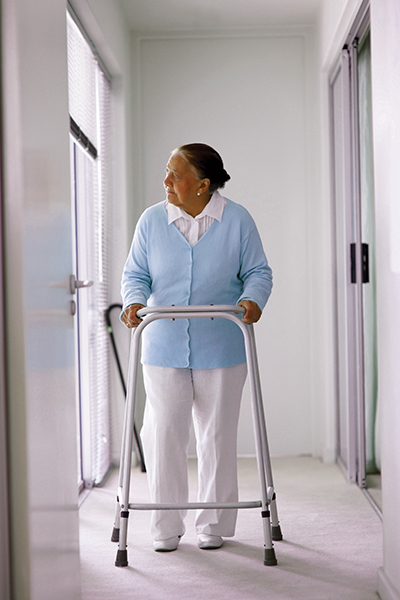Care Blog
Stages of Parkinson’s Disease

Each person progresses through the five stages of Parkinson’s disease differently, but learning the course Parkinson’s may take can help to gain a better understanding of the disease and its effects.
Parkinson’s disease affects the nervous system of the human body. This limits a person’s ability to control some of his or her muscles. It’s caused by a slow, gradual loss of certain cells in the brain. These cells make a chemical called dopamine. This chemical is needed for muscles to work normally.
Stage 1: During this initial phase of the disease, a person usually experiences only mild symptoms. Stage I is also known as early-stage Parkinson’s disease.
- Signs and symptoms are only on one side of the body.
- Symptoms are inconvenient but not disabling.
- The person usually has uncontrolled tremors or shaking in one limb.
- Friends and family can usually detect changes in the person’s posture, loss of balance and abnormal facial expressions.
Stage 2: In the second stage of Parkinson’s disease, a person’s inability to complete normal physical tasks becomes more apparent.
- Symptoms are bilateral, affecting both limbs and both sides of the body.
- The person has minimal disability, usually encountering problems walking or maintaining balance.
- Posture is affected.
Stage 3: Stages III, IV and V are when a person develops significant disability from Parkinson’s disease. Stage III is considered moderate Parkinson’s disease.
- There is significant slowing of body movements. Walking may become a process of taking small steps and slow movement, which is called a shuffling gait.
- Early impairment of equilibrium results in the inability to walk straight or to stand.
- There is generalized dysfunction that is moderately severe.
Stage 4: This stage of the disease is accompanied by severe symptoms of Parkinson’s. This stage is considered advanced Parkinson’s disease.
- Rigidity and bradykinesia are often visible.
- The person is no longer able to complete day-to-day tasks and usually cannot live alone.
- Tremors and shakiness may lessen or become non-existent for unknown reasons during this time.
Stage 5: The last or final stage of Parkinson’s disease usually takes over the patient’s physical movements.
- The person reaches the cachectic stage (general reduction in vitality and strength of body and mind).
- Invalidism is complete.
- The person may not be able to stand or walk.
- The person requires constant one-on-one care.
Working with a care agency that understands the symptoms and care needs for each of these stages can relieve many of the worries associated with the future. All Care In-Home Care Solutions will help to anticipate your loved one’s care needs and make life more comfortable. Contact us today to learn more about our senior services Grants Pass and the surrounding areas depend on.
Download a printable PDF version of this page.
Sources: WebMD and eMedTV
Share:
Call Us Today
Call us today to schedule a free in-home care assessment so we can help you understand how you or a loved one can have a safe and happy life at home.

Take the Quiz
Let us know what kind of help you might need, and we’ll be back in touch to customize a plan for you.
Take the Quiz
